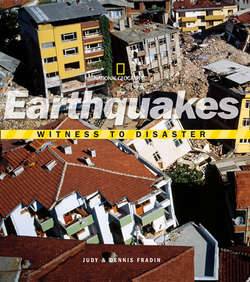Читать книгу Witness to Disaster: Earthquakes - National Kids Geographic - Страница 6
Introduction: Japan Earthquake
ОглавлениеAs one of the world’s most earthquake-prone countries, Japan is well prepared for such disasters. Buildings on the island nation are designed to withstand large earthquakes. Schoolchildren are taught how to protect themselves when they occur. Drills are held regularly to make sure citizens react safely when the ground shakes.
But nothing could prepare the Japanese people for what occurred on March 11, 2011. At 2:46 on that Friday afternoon, giant slabs of the Earth’s crust nearly 200 miles (320 kilometers) long and 100 miles (160 kilometers) wide fractured and were thrust beneath Japan’s northeast coast. The result was the fourth biggest earthquake to strike our planet over the past century. It was so powerful that it pushed northeastern Japan 13 feet (4 meters) to the east and dropped the island’s coastline two feet. Buildings toppled as if they were children’s toys, and people were buried beneath the rubble.
But the quake wasn’t done with Japan. The upheaval lifted the sea floor and sloshed the ocean water, spawning giant waves known as a tsunami. Walls of water moving as fast as a jet plane struck the Japanese coast and pounded it with waves as tall as a three-story building.
The earthquake and the tsunami waves it created killed an estimated 25,000 people. In addition, the disaster damaged a cluster of nuclear reactors, leaving survivors without electricity. Leaking radioactive fumes from the reactors forced tens of thousands of people to evacuate the area. Many fear that radioactive contamination from the reactors may prove harmful to people who lived nearby.
It could take years for Japan to recover from this disaster. As spectacular as it was, the Japanese earthquake was just one of many thousands of large earthquakes that have rocked our planet and that will continue to do so as long as there is an Earth.
